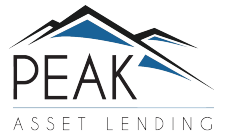As our asset-based lending blog pointed out, you have credit-based lending options for new construction financing. In this post, we’ll discuss using banks, private lenders and asset-based loans for new construction so you can compare options.
Using a Bank Loan for New Construction
Banks typically offer lower rates than private lenders, but the process of getting a mortgage loan could take longer and be more involved (more paperwork). Banks typically rely on traceable and documented income sources, which can make getting an investment loan trickier if you’re self-employed. Bank loan options also may be stricter due to regulations.
Using Private Lenders for New Construction
Using a private lender offers advantages. Obtaining a loan from a private lender for new construction is quicker than the traditional loan process. Banks typically take a month at least while the loan process for private lenders can take anywhere from a week to a month. Plus, you’ll typically have less documentation and underwriting. Private lending is generally more flexible than traditional lending, so you can customize the terms of the loan to fit your needs.
Rates from private lenders are typically higher. This is because private lenders are backed by investors, banks or both, so they need to cover costs.
People seeking out private lenders often have unique situations. They need a short-term loan to fund the construction of an investment property.
Asset-based Loan Challenges for New Construction
Most investors need a loan to fund their project. Getting an asset-based loan for new construction can be challenging. Asset-based loans rely on property as collateral for the loan. If it’s a new construction project, there isn’t property to use as collateral because it hasn’t been built yet, which makes it harder to get a loan. Another factor is that not all lenders offer asset-based loans—only private lenders and some banks offer asset-based loans.
Increased Risk
When buying an existing home, lenders see the value in the home to secure the mortgage. For new construction, it’s harder for lenders to see the value because it’s simply an empty lot. Lenders are conservative on loan-to-cost leverage versus loan-to-value. It’s a riskier situation for lenders because there isn’t an asset to secure the mortgage. And if it’s a built-to-rent situation, there isn’t a history of collecting rent. As a result, it’s harder to find asset-based lenders for new construction.
For example, let’s imagine that Kerry wants to build a duplex to rent out. She needs a lender to see the loan-to-value of the new construction project and not the loan-to-cost of the land. Without a history of collecting rent, it’s harder for Kerry to paint the picture of the property’s potential for the lender.
Have Private Lending Questions?
As an experienced private lender, Peak can help you with a new construction loan for your build-to-sell or build-to-rent property. We’ve helped plenty of investors, and we’d like to be a resource for your next investment property!


Recent Comments